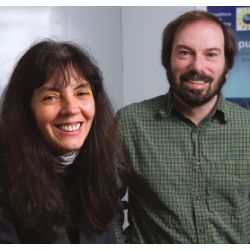
Two hundred environmental and computer scientists convened for four days in June for the First International Conference on Computational Sustainability, held at Cornell University. The conference’s goal was to establish and develop a research community around the field of computational sustainability, which aims to develop computational and mathematical models and methods for the management of resources needed to solve the problems confronting sustainability in today’s rapidly developing world.
As some conservationists and environmental scientists gave their presentations, however, it became apparent that their knowledge of the computational techniques applicable to the problems they want to solve lags behind the state of the art in computer science. Likewise, some computer scientists and mathematicians are unaware that ecological problems often translate into interesting decision optimization and statistical learning problems involving combinatorial decisions, dynamic modeling, and uncertainty, says Carla Gomes, director of Cornell’s Institute for Computational Sustainability. “We must first find a common language,” Gomes said. “This is new intellectual territory with great potential, and with unique societal benefits.”
Several computer scientists who have created algorithms for environmental applications presented at the conference. Carlos Guestrin, a professor of computer science at Carnegie Mellon University and his former graduate student Andreas Krause (now an assistant professor of computer science at Caltech), for example, are optimizing the placement of sensors to detect contamination in drinking water distribution systems. They have also developed an algorithm that enables lake-trolling, sensor-equipped robots to detect algal bloom and predict, even if no previous data exists, where it will occur next.
Vipin Kumar, head of the computer science and engineering department at the University of Minnesota, spoke about global scale patterns in biosphere processes and their impact on the global carbon cycle. He and colleagues at NASA are investigating the use of data mining algorithms to detect changes in the global land cover using satellite data. Kumar’s team developed a novel recursive merging algorithm to identify changes in time series data, which they applied to the MODIS enhanced vegetation index for California from 2001 to 2008 and produced detailed information on forest fires, the conversion of farmland to residential areas, and the conversion of desert to farmland and other commercial uses.
Throughout the conference, environmental scientists encouraged computer scientists to collaborate with them. Michael Runge, a research ecologist at the U.S. Geological Survey’s Patuxent Wildlife Research Center, said he and his colleagues had believed there were no solutions to many of the complex ways they wanted to formulate ecological decision problems. “I’ve realized that we were over-constraining how we were thinking about problems,” he said. “I’ve had my eyes opened to the number of tools available from the mathematics and computational side. The question is: How do we connect these amazing tools and the huge demand for their application to ecological problems?
“We need people to bridge communication between all these fields, people who can see that a disease dynamics or water supply contamination problem looks a lot like a telecommunications network problem,” says Runge. “We also need people to do the ‘plug and chug’ applied work that is not necessarily novel from the academic standpoint, but critical from the applied standpoint.”




Join the Discussion (0)
Become a Member or Sign In to Post a Comment